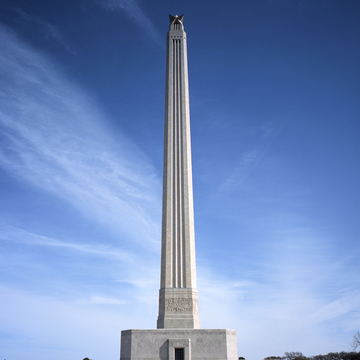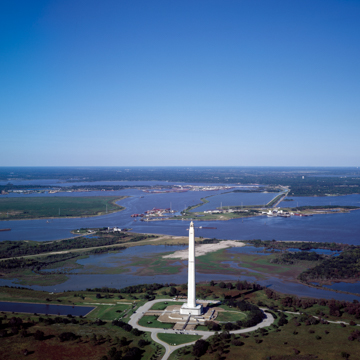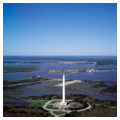The San Jacinto Monument was built by the State of Texas with funding from the PWA. It commemorated the one hundredth anniversary of the Battle of San Jacinto, fought on April 21, 1836, at which the Anglo-Texan army of Sam Houston defeated a numerically superior force and captured the Mexican general, Antonio López de Santa Anna, compelling him to assent to the independence of Texas from Mexico. The monument sits in an open landscape in the 1,003-acre San Jacinto Battleground State Park, in the midst of the petrochemical corridor along the Houston Ship Channel. Finn designed the monument following instructions from his client, Jesse H. Jones, who thirty years earlier had been instrumental in securing the financing to construct the Houston Ship Channel. The monument represented a century-old histori cal event, yet it also attested to the newfound power of Texas during the New Deal era, when Texans played prominent roles in the Roosevelt administration.
The slender cast-in-place concrete obelisk is 567 feet tall, 12 feet higher than the Washington Monument. It is faced with Texas fossilized limestone, the iconic Texan regional material of the New Deal era. A reflecting basin eighteen hundred feet long visually projects the shaft onto the flat landscape. At close range, Houston sculptor William McVey's triumphal narrative of Anglo-American perseverance, industry, and entitlement, figured in a relief frieze, comes into focus, supplemented at even closer range by inscribed panels of text framing the central portals. Bronze outer doors in the portals bear inset panels exhibiting the six flags of Texas. The shaft is crowned by a steel-framed, three-dimensional Lone Star, thirty-four feet high, which Jesse Jones's biographer, Bascom Timmons, asserts was Jones's idea. The contrast between this hieratic, monumental composition and its rustic-industrial setting is surreal.

















